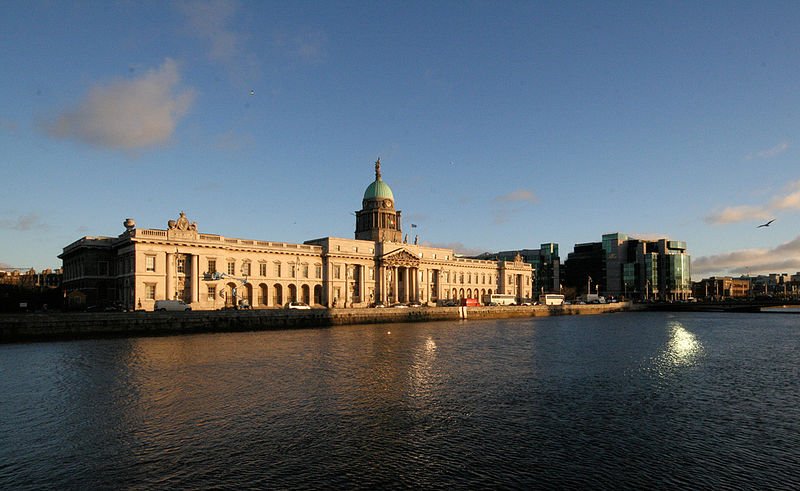 Custom House, Dublin, Ireland
Custom House, Dublin, IrelandSource: https://commons.wikimedia.org/wiki/File:Custom_House,_Dublin.jpg
Author: Peter Brown

Dublin is the capital and most populous city in Ireland. The city covers 114.99 sq km (44.4 sq mi), at the mouth of the River Liffey, approximately midpoint on the east coast of Ireland. Dublin has a population of 525,000 (2011 estimate). It is within a metropolitan area with a population of 1.8 million people. It observes the West European Time, which is UTC+0 and in summer the Irish Summer Time (UTC+1).
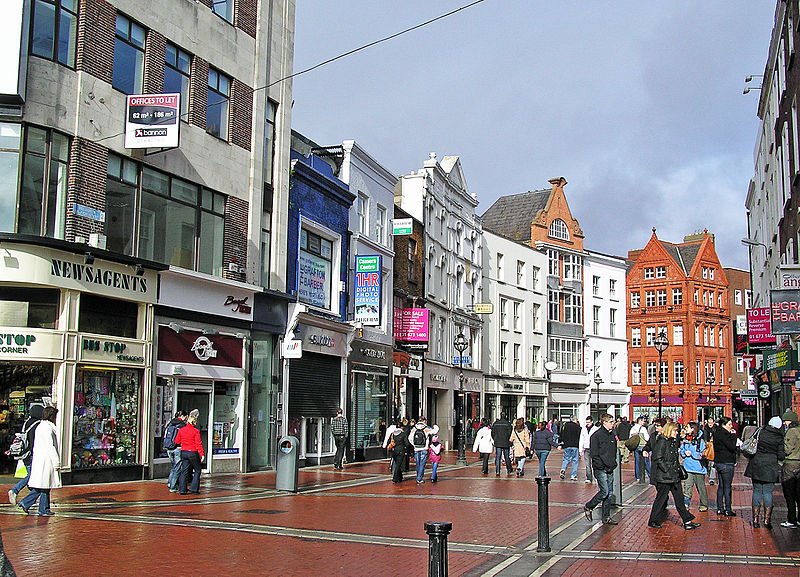 Grafton Street, Dublin
Grafton Street, DublinSource: https://commons.wikimedia.org/wiki/File:Grafton_St,_Dublin.jpg
Author: Donaldytong

Dublin experiences a maritime climate without extreme temperature variations. Hence you can expect cool summers and mild winters here. The warmest month is July, when the average high temperature reaches 19.6°C (67.3°F). Coldest months are January and February, when the average low temperature drops to 3.5°C (38.3°F). December is the wettest month, with 73 mm (2.87 in) of precipitation, which may include some snow.
The area around Dublin has been inhabited since prehistoric times. Around AD 140, there was a settlement here called Eblana Civitas, as documented by famous Egyptian astronomer and cartographer Ptolemy. The Dublin that we know today is believed to have been established by the Vikings in the 9th century. Its name means "black pool".
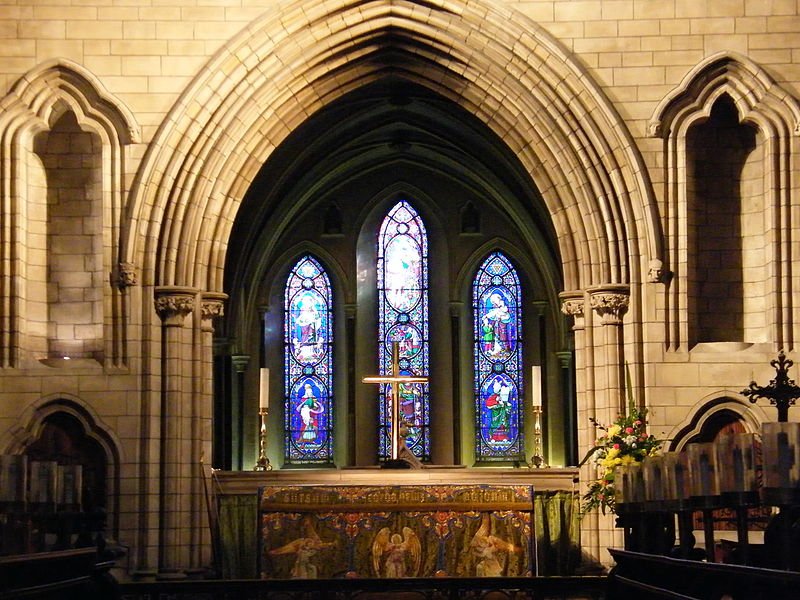 Altar of St Patrick's Cathedral, Dublin
Altar of St Patrick's Cathedral, DublinSource: https://commons.wikimedia.org/wiki/File:Christ_Church_Cathedral,_Dublin,_altar.jpg
Author: Pilgab

Dublin had been a Catholic village since its earliest time, as Ireland itself had embraced the faith since the earliest missionary, sent by the Pope, arrived in AD 400. In 1297, the first Irish Parliament met in Dublin.
In 1530, Ireland was taken over by the English under the Tudor Dynasty, and Henry VIII was declared King of Ireland. Thus began a process of systematic Anglicanism, with the imposition of English law, language and culture on the Irish. The Catholic faith was suppressed, the Catholic St Patric's Cathedral and Christ Church Cathedral were forced to convert to Protestant.
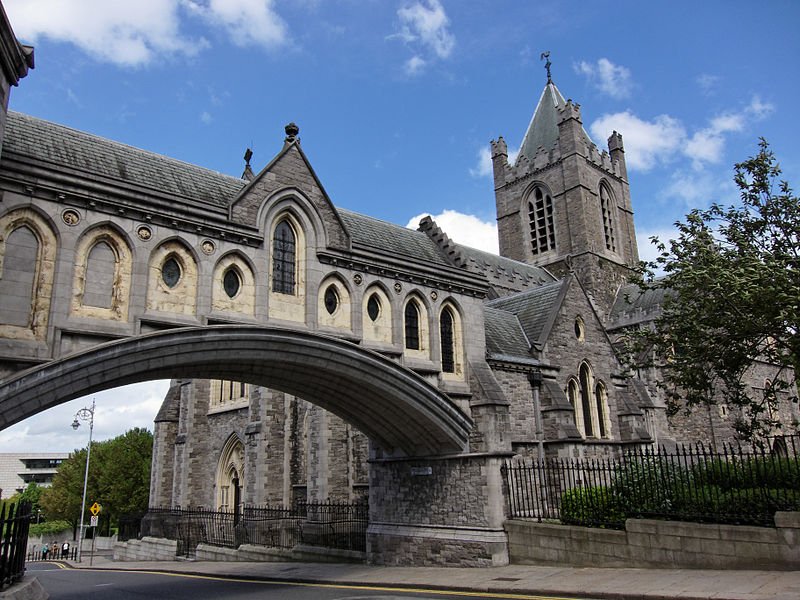 Christ Church Cathedral, Dublin
Christ Church Cathedral, DublinSource: https://commons.wikimedia.org/wiki/File:Dublin_-_Christ_Church_Cathedral_-_110508_143136.jpg
Author: Barcex

Despite discrimination and plague, the city of Dublin grew, supported by a wool and linen industry. By the 17th century, it was already the second most populous city in the British Empire and firth largest in Europe. Its growth accelerated further in the 18th century, and many now historic buildings were built.
The 19th century ushered in a period of political upheaval and economic decline. It began with the Act of Union of 1800, which united the kingdoms of Great Britain and Ireland, creating the United Kingdom of Great Britain and Ireland, to the disadvantage of the latter. The role of Dublin as a seat of government was removed, and while the Industrial Revolution benefited many cities in England, it appeared to bypass Dublin. Even Belfast was growing at a faster rate, being better positioned to benefit from international trade, textile manufacturing and shipbuilding.
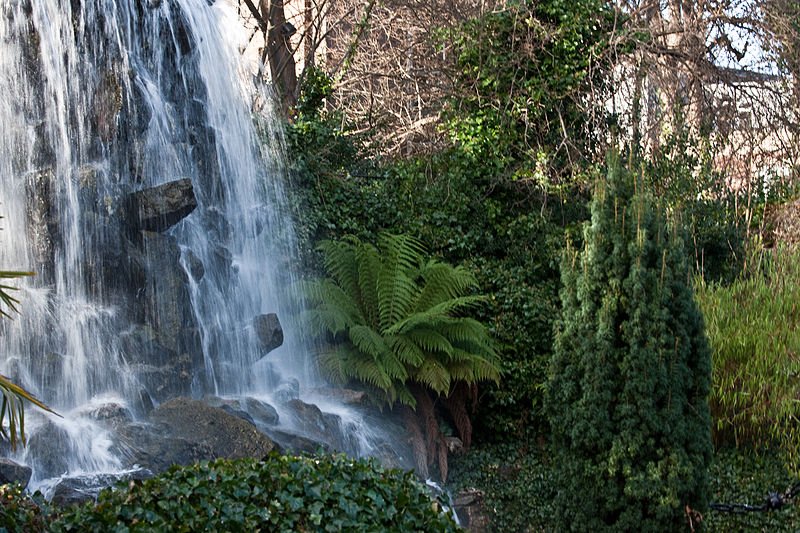 Iveagh Gardens, Dublin
Iveagh Gardens, DublinSource: https://commons.wikimedia.org/wiki/File:Iveagh_Gardens,_Dublin_-_infomatique.jpg
Author: William Murphy

The 20th century brought more turbulence to Dublin, particularly from the Easter Rising, the Irish War of Independence and the Irish Civil War. Eventually, with the partition of the island of Ireland, it became the capital of the Irish Free State (1922-49), the precursor to the present Republic of Ireland (1949-).
Dublin finally began to enjoy rapid economic expansion towards the end of the 20th century. The era from 1995 until 2007 is known as the Celtic Tiger period. During that period, the Irish GDP grew by between 7.8 to 11.5% annually, and by 2007, the Republic of Ireland had achieved the GNP level of the most developed Western European countries.
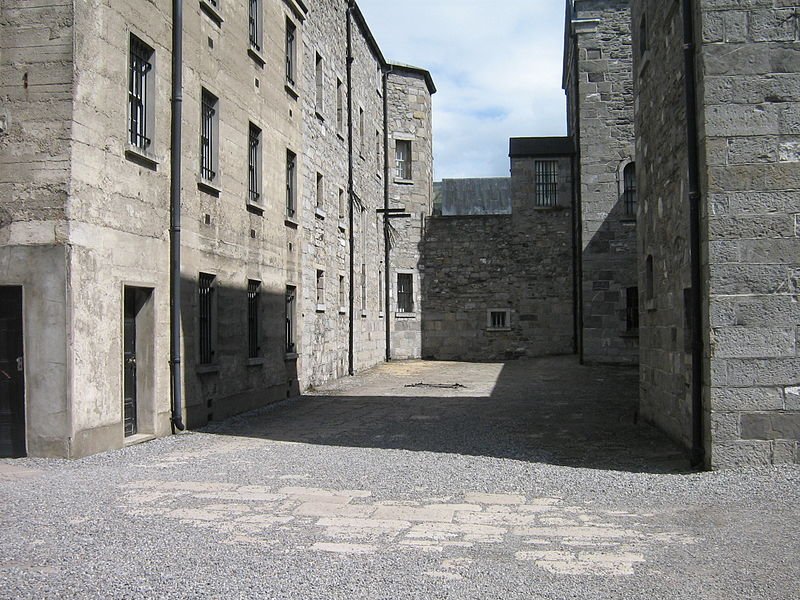 Kilmainham Gaol, Dublin
Kilmainham Gaol, DublinSource: https://commons.wikimedia.org/wiki/File:Courtyard_behind_Kilmainham_Gaol.jpg
Author: Ticketautomat

Ireland's economic boom came to an abrupt end in 2008, when its GDP contracted by 14%. By 2010, unemployment in Ireland had also reached 14%. By mid-2011, the Irish government's bond ratings have been downgraded to junk level. At time of writing (September 2011), the Irish government was still in talks for a multi-billion-dollar economic bail-out.
The Celtic Tiger years have propelled Dublin to become the fourth richest city in the world by purchasing power and the 10th richest by personal income. It is today the European headquarters of many multinational companies including Google, Facebook and Pfizer.
Visiting Dublin
Dublin Airport (DUB) is located about 10 km (6 mi) to the north of downtown. With 18.4 million passenger movement a year, it is the busiest airport in the Republic of Ireland. The airport is the headquarters of Aer Lingus and low-cost carrier Ryanair. It receives flights from all major cities in Europe as well as selected cities around the world.Arriving at Dublin Airport, you have a choice of taking the bus or the taxi to downtown. There are three bus options to choose: the Aircoach, the AirLink and the public bus. The Aircoach transport you to selected hotels. The fare is €7 one-way or €12 return. The AirLink goes to the city center and bus station for €6 one-way and €10 return. Public bus 16A and 41 serves the airport as part of their routes. The public bus fare is €2.00, or €1.90 if bought as the Travel 90 ticket from the vending machine before boarding, the Travel 90 ticket allows you unlimited transfers for a 90-minute journey.
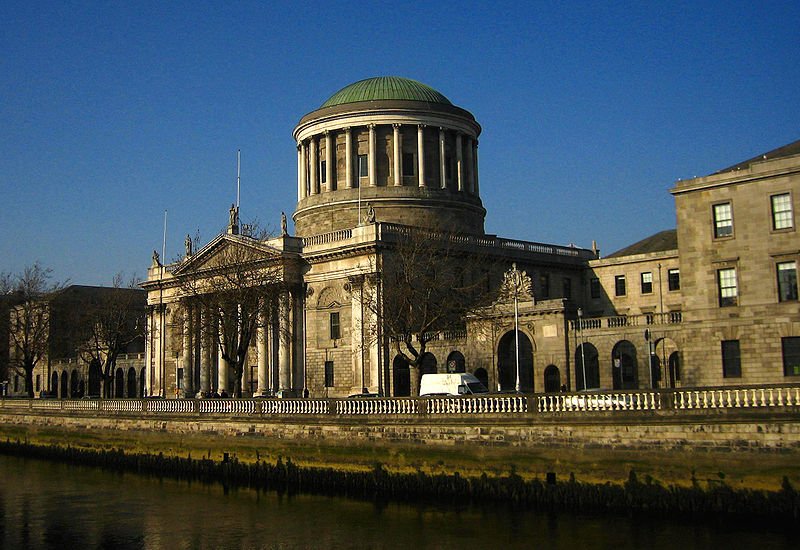 Four Courts, Dublin
Four Courts, DublinSource: https://commons.wikimedia.org/wiki/File:Four_Courts,_Dublin,_Ireland.jpg
Author: kieranlynam

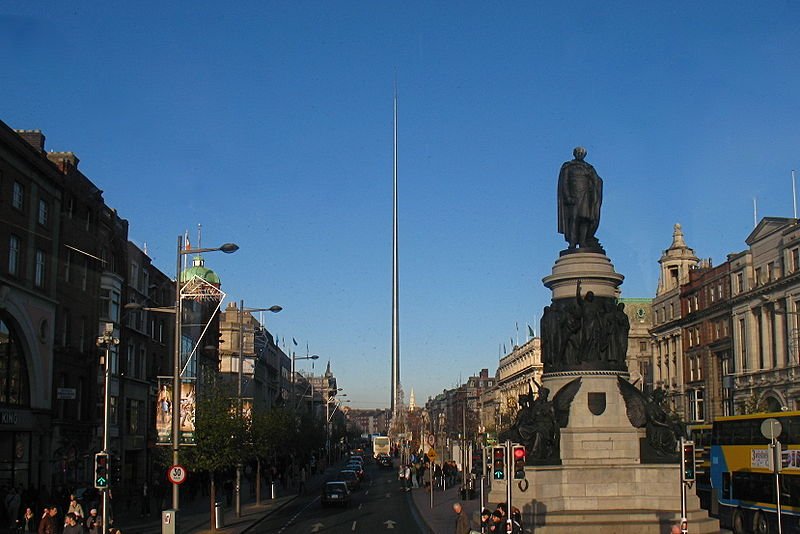 O'Connell Street, Dublin
O'Connell Street, DublinSource: https://commons.wikimedia.org/wiki/File:O%27Connell_Street_Dublin.jpg
Author: Михал Орела

Sights & Attractions in Dublin
Museums, Libraries and Galleries in Dublin- Chester Beatty Library and Gallery of Oriental Art
Bequeathed to Ireland by American mining tycoon and art collector Chester Beatty, this library and gallery holds important works, including some 300 copies of the Koran, Babylonian stone tablets, Greek papyri and more. It was named the European Museum of the Year in 2002. - Dublin Writers Museum
Museum occupying an 18th century townhouse celebrating Irish literature and literary figures. - Dublinia and the Viking World
An exhibition celebrating the formative years of Dublin and its Viking past. It includes a reconstructed Medieval City that offers visitors a glimpse of how Dublin was like hundreds of years ago. - Hugh Lane Gallery
Gallery exhibiting the art collection of Sir Hugh Lane. - James Joyce Centre
A site for James Joyce enthusiasts, the center has exhibits related to the famous author and his works. - Marsh's Library
Built in 1701 for the Archbishop of Dublin, this is the oldest public library in Ireland. - National Gallery of Ireland
Purpose-built gallery that opened in 1864 to showcase works bequested by generous donors. Among the benefactors included George Bernard Shaw. - National Library
Built in 1890, the library holds the first editions of printed material produced by Irish writer and every book published in Ireland. - National Museum of Ireland - Archaeology Section (St Kildare Street)
A treasure house of Ireland's ancient artifacts, this is the Archaeology of the museum while its Decorative Arts and History section are housed closed to Phoenix Park. - Natural History Museum
Museum often nicknamed the Dead Zoo for its menagerie of stuffed animals, it is closed for a period of renovation following the collapse of a staircase in 2007 that injured 11 people. - Old Jameson's Distillery
Former distillery turned museum on whiskey and its history. - Royal Hibernian Academy
Entrusted with improving people's appreciation of visual arts, this institution is housed in a modern building at the end of Ely Place.
- Bank of Ireland
This historic bank building was originally the first purpose-built parliament house in Europe. - City Hall
Imposing built designed by Thomas Cooley in the Corinthian style, and built between 1769 and 1779. - Custom House
Building that used to house the customs and excise office of Dublin. It was built just nine years before the 1800 Act of Union, which transferred its customs functions to London. - Dublin Castle
Since the Anglo-Normans built it in the 13th century, Dublin Castle has been the seat of English rule in Ireland for the subsequent seven hundred years. - Four Courts
1796 historic building that was destroyed during the Irish Civil War was restored to its original design in 1932. - King's Inns
Historic building that was built in 1795 as a residence and study for barristers. - Leinster House
Historic building that houses the two chambers of the Irish Parliament, the Dáil and the Seanad. - Mansion House
A charming Queen Anne'style historic building from 1710, built by the aristocrat Joshua Dawson. - Powerscourt Townhouse
Today a major shopping center of Dublin, the historic building from 1774 was originally the city residence of Viscount Powerscout. - Rotunda Hospital
This is the first purpose-built maternity hospital in Europe. It was founded in 1745 by Dr Bartholomew Mosse. - Tailors' Hall
The only surviving guildhall in Dublin, today located in a modernizing part of the city. - Trinity College
One of the most prestigious colleges in Ireland, Trinity College is a Protestant College established in 1592 on the site of an Augustinian monastery. This led to a Catholic boycott of the college which was in effect until 1970, when the Catholic Church relaxed its opposition.
- Fitzwilliam Square
This is one of the last Georgian squares to be laid out in Dublic. It has a large concentration of medical practices lining it. - Grafton Street
The most prestigious shopping street in Dublin. The finest stores and department stores of Dublin can be found here. - Ha'penny Bridge
Officially known as Liffey Bridge, it links Liffey Street with the Temple Bar area. This is one of the most photographed sights in the city. - Merrion Square
The biggest and grandeast Georgian square in Dublin, covering 5 hectares, and lined by important national institutions. - O'Connell Street
The main north-south thoroughfare in Dublin lined by historic buildings. - Smithfield
Once Dublin's oldest residential neighborhood, Smithfield underwent urban renewal to become an outdoor events venue. - Temple Bar
This is the liveliest night spot in Dublin, located between the Bank of Ireland and Christ Church Cathedral. - Wood Quay
Site of the original Viking settlement which became Dublin, the area now hosts an information center.
- Christ Church Cathedral
This is the older of the two medieval cathedrals of Dublin, Today it is the cathedral of the Anglican Church of Ireland, following the Reformation in 1539, when King Henry VIII forced Christ Church to convert from Roman Catholic to Protestant. - St Ann's Church
Church with a Romanesque façade. Its stained glass windows were installed in the mid-19th century. Past parishioners included Bram Stoker, who wrote Dracula. - St Audoen's Church
This is the oldest surviving medieval church in Dublin, with its 15th century nave still intact, and its bells from 1423. - St Mary's Abbey
Remains of a 12th century Benedictine abbey which was dissolved by King Henry VII when he broke with the Catholic church. - St Mary's Pro-Cathedral
The seat of the Roman Catholic Archbishop of Dublin, the pro-cathedral was built to take the role played by Christ Church Cathedral and St Patric's Cathedral, which were forced to become Protestant during the Reformation. Built before Catholic emancipation, it is located at a less-than-best site that the Anglo-Irish leaders would allow. - St Michan's Church
Church built on the site of an 11th-century Hiberno-Viking church holds the preserved bodies of the long departed in its underground vaults. - St Patrick's Cathedral
Located on the site when Ireland's patron saint, St Patrict, baptized converts in the 5th century, this is the largest church building in Ireland. - Whitefriar Street Carmelite Church
Roman Catholic church of the Carmalite order built in 1825, on the site of the pre-Reformation Carmelite priory which dates back to 1539.
- Abbey Theatre
Turn of the 20th century theatre that has staged a number of acclaimed plays. - Gate Theatre
A theater renowned for staging many celebrated dramas.
- Garden of Rememberance
A small park created to remember the men and women who died in pursuit of Irish freedom. - St Stephen's Green
A 9-hectare green that got its present appearance in 1880. The area is today neatly landscaped with a fountain and a lake.
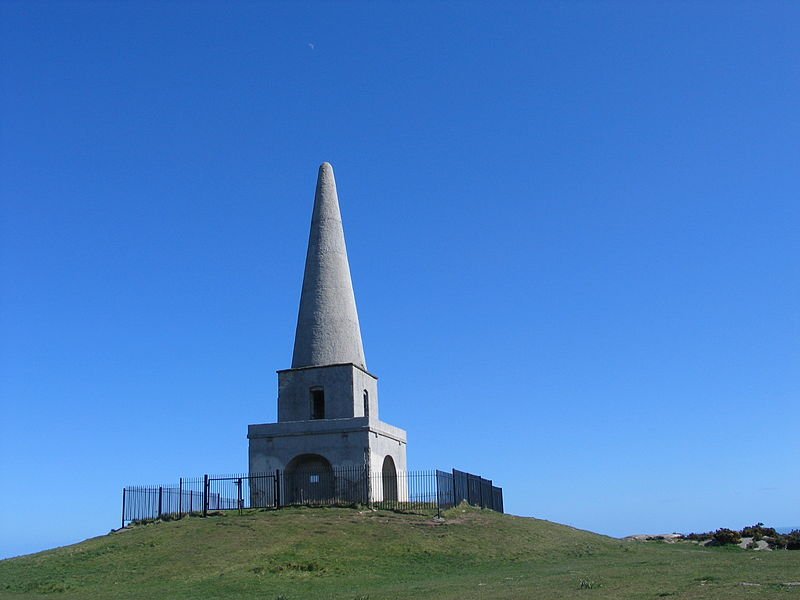 Killiney Hill Obelisk, Dublin
Killiney Hill Obelisk, DublinSource: https://commons.wikimedia.org/wiki/File:Killiney_Hill_Obelisk.jpg
Author: Joe King

Sights & Attractions near Dublin
- Casino Marino
One of the finest Neo-Classical buildings in Ireland, built in the 1760s for Lord Charlemont. - Dalkey
Originally a town with seven castles, Dalkey still has two of them standing today. This attractive village is a nice day trip of Dublin. - Dun Laoghaire
A major seaport, Dun Laoghaire is a nice place to walk along the shore and admire the views of the harbour. - Guinness Storehouse
Listed heritage building celebrating the Guinness brewery. - Howth
A fishing town to the north of Dublin with scenic views of Dublin Bay. - Irish Museum of Modern Art/Royal Hospital Kilmainham
Built in 1680 to resemble Les Invalides of Paris, this is one of the finest surviving 17th century building of Ireland. - James Joyce Tower
One of the defensive towers built in 1804 between Dublin and Bray to thwart the invasion by Napoleon, it got its present name when the famous author stayed there a hundred years later for a week. - Killiney
A charming village to the south of Dalkey, reached via a scenic coastal road. - Kilmainham Gaol
Historic prison today preserved as a heritage site with tours for visitors. - Malahide Castle
A huge 12th century castle on a 100-hectare site, once the home of the Talbot family until 1973. - National Botanic Gardens
The foremost botanic gardens of Ireland, established in 1795 on a 20-hectare site, the National Botanic Gardens are the home to some 16,000 different plant species today. - National Museum of Ireland - Decorative Arts & History (Collins Barracks)
This is the other branch of the National Museum of Ireland. The museum showcases decorative items from furniture to silver and other items. - Phoenix Park
The largest enclosed city park in Europe, surrounded by 11 kilometers of walls, with a number of sights including the Zoological Gardens, monuments and statues. - Shaw's Birthplace
The house where the famous playwright and Nobel prizewinner George Bernard Shaw was born in 1856/ - Waterways Visitors' Centre
Center devoted to celebrating Ireland's inner waterways and their flora and fauna.
 Latest updates on Penang Travel Tips
Latest updates on Penang Travel Tips
 Discover with Timothy YouTube Channel
Discover with Timothy YouTube Channel
 PG Food Channel
PG Food Channel
 Learn Penang Hokkien YouTube Channel
Learn Penang Hokkien YouTube Channel
 SojiMart Videos
SojiMart Videos
Latest from Discover with Timothy: Gurney Bay - what to see and do there
About this website

Hello and thanks for reading this page. My name is Timothy and my hobby is in describing places so that I can share the information with the general public. My website has become the go to site for a lot of people including students, teachers, journalists, etc. whenever they seek information on places, particularly those in Malaysia and Singapore. I have been doing this since 5 January 2003, for over twenty years already. You can read about me at Discover Timothy. By now I have compiled information on thousands of places, mostly in Peninsular Malaysia and Singapore, and I continue to add more almost every day. My goal is to describe every street in every town in Malaysia and Singapore.
Robbie's Roadmap
- Episode 1: Robbie's Journey to Financial Freedom
- Episode 2: Lost in America
- Episode 3: The Value of Money
- Episode 4: The Mentor
- Episode 5: The Thing that Makes Money
- Episode 6: The walk with a Billionaire
- Episode 7: The Financial Freedom Awakening
- Episode 8: Meet Mr Washington
- Episode 9: The Pizzeria Incident
Copyright © 2003-2024 Timothy Tye. All Rights Reserved.


 Go Back
Go Back